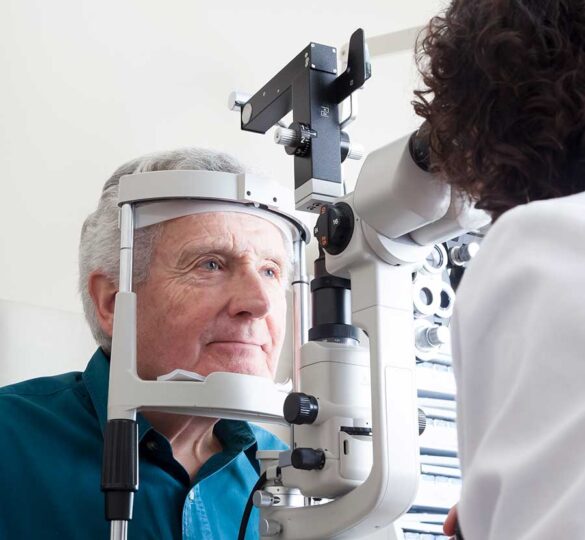New Medical Therapies Offer Hope for Glaucoma Patients
“It’s always exciting to have new and effective treatment alternatives available to help patients,” said Andrew Iwach, MD.

Glaucoma, the leading cause of irreversible blindness, is a complicated disease in which damage to the optic nerve leads to progressive vision loss. Today, more than 3 million Americans are living with glaucoma, and this number is expected to double by 2050.
The only current approved treatment for glaucoma is to lower intraocular pressure (IOP), which can be achieved with eyedrops, laser, or through surgical intervention. Medication eye drops are the most common treatment modality and, over time, patients may need to take multiple types of eye drops in order to stop progression of a disease that typically initially has no symptoms.
An eye doctor will determine which medications and treatments are best suited for a patient, based on their individual case, medical history and current medication regimen.
Recently, there have been numerous advances in the treatment of glaucoma. In 2017, two new drug therapies were approved by the U.S. Food and Drug Administration (FDA). These are the first new classes of glaucoma drops to hit the market in two decades.
The first, Vyzulta™ (latanoprostene bunod ophthalmic solution), developed by Bausch + Lomb is a dual action, once per day eye drop. The second new eye drop, once-daily Rhopressa® (netarsudil ophthalmic solution) from Aerie Pharmaceuticals, Inc., is a novel mechanism of action designed to enhance fluid outflow and reduce the production of fluid in the eye in order to reduce IOP.
“It’s always exciting to have new and effective treatment alternatives available to help patients,” said Andrew Iwach, MD, executive director, Glaucoma Center of San Francisco and Chairman, Glaucoma Research Foundation.
In addition to new drug advances, the continued development of minimally-invasive surgical procedures is providing additional options to lower IOP by enhancing part of the natural drainage pathways of the eye with minimal tissue disruption. Micro-invasive glaucoma surgery (MIGS) uses microscopic-sized equipment and tiny incisions, offering a safer alternative than conventional glaucoma surgery with the potential benefit of reducing the patient’s dependence on topical glaucoma medication. Current FDA-approved MIGS procedures include the Trabectome (NeoMedix), iStent® (Glaukos Corporation), Kahook Blade (New World Medical) for Goniotomy, and the XEN® Gel Stent (Allergan). The Hydrus™ Microstent (Ivantis) is currently part of an FDA-approved clinical trial with a projected market availability later in 2018.
Dr. Iwach noted, “The development and advancement of new surgical options, as well as novel drugs and drug delivery systems, means doctors have more tools to treat glaucoma patients than ever before.” He adds, “The key to these clinical advances is research, and the Glaucoma Research Foundation is dedicated to funding innovative investigations to explore new therapies and ultimately a cure.”
First posted on March 6, 2018. Last reviewed on April 19, 2022